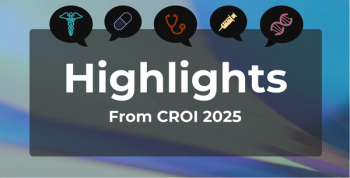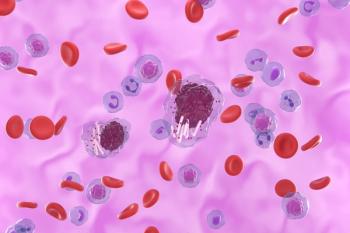
Immune-Based Risk Score Shows Strong Predictive Value for CRC Outcomes
Key Takeaways
- A multi-omics and machine learning approach integrates clinical data with immune gene expression for CRC prognosis and immunotherapy response prediction.
- The Immune Response-related Risk Score (IRRS) is based on 13 immune-related genes, outperforming existing tools in predicting patient outcomes.
A novel machine learning model enhances colorectal cancer (CRC) prognosis and immunotherapy response prediction by integrating clinical data and immune gene expression.
A new multi-omics and machine learning approach integrating clinical data with immune gene expression shows strong potential for accurately predicting prognosis and immunotherapy response in
Colorectal cancer (CRC) is one of the most common and deadly cancers worldwide, particularly in its later stages.2 While traditional tools like classic tumor lymph node metastasis (TNM) staging system are used for prognosis and treatment planning, they don't account for the tumor microenvironment (TME), which plays a crucial role in cancer progression and treatment response.1 Current biomarkers used to predict response to immunotherapy (like PD-L1 expression or microsatellite instability [MSI] status) are limited in accuracy and applicability.3 Given the complexity and heterogeneity of CRC, there is a need for more reliable, comprehensive biomarkers that can guide treatment decisions, especially for immunotherapy.1
Researchers of the study, which was
This study used transcriptomic data from 432 CRC samples in The Cancer Genome Atlas (TCGA) to analyze immune activity profiles using the Tumor Immune Phenotype (TIP) framework. TIP assesses the status of anti-cancer immunity through a seven-step cycle, including processes such as immune cell trafficking, infiltration, and tumor cell killing. Researchers found that CRC tumors had significantly higher immune activity in step 4 (immune cell trafficking) compared to normal tissues, indicating active immune cell recruitment into tumors despite the immunosuppressive tumor microenvironment. Furthermore, immune activity scores were inversely correlated with tumor stage and metastasis—patients with early-stage disease and no metastasis showed higher immune activity.
These immune activity scores correlated significantly with immune cell infiltration expression of chemokines and receptors, and immune-related pathways, such as antigen presentation, T-cell receptor signaling, and natural killer cell cytotoxicity. Differential gene expression and pathway enrichment analyses revealed that cytokine signaling, MHC class II-related activity, and T-cell activation were enriched in tumors with high immune activity. A set of 508 genes strongly associated with immune activity was identified through combined differential expression and gene co-expression network analysis.
To build a prognostic model, machine learning methods were applied to the 508 genes, narrowing them down to 13 core immune-related genes:
- CTLA4
- PDCD1
- CD274
- CXCL9
- CXCL10
- GZMB
- PRF1
- LAG3
- TIGIT
- ICOS
- CD8A
- HLA-DRA
- STAT1
These genes were used to construct the IRRS, which successfully stratified patients into high-risk and low-risk groups across TCGA and 6 independent datasets. The high-risk group showed worse overall survival, while the low-risk group had better prognosis, higher immune activity, more immune cell infiltration, and elevated expression of immune checkpoint molecules like PDCD1, CD274, and CTLA4.
The IRRS was also independently predictive of patient outcomes beyond standard clinical parameters such as TNM stage and age, showing the highest prognostic accuracy (area under the curve, 0.861). Further immune profiling revealed that low-risk patients had higher infiltration of multiple immune cell types and increased activation of inflammatory and anti-tumor pathways. The authors said that their findings suggested that the IRRS not only serves as a strong prognostic tool for CRC but also provides valuable insight into tumor immunogenicity and potential responsiveness to immunotherapy.
The authors concluded, “The key genes identified in our study provide valuable insights into the molecular mechanisms underlying CRC immune phenotypes and represent potential targets for therapeutic intervention. In future studies, it can be further combined with clinical studies to further validate the reliability of the IRRS model.”
References
1. Liu Z, Yu D, Xia P, et al. Machine learning approach to predict prognosis and immunotherapy responses in colorectal cancer patients. hLife. 2025;3:172-186. doi:10.1016/j.hlife.2025.02.001
2. Bray F, Ferlay J, Soerjomataram I, Siegel RL, Torre LA, Jemal A. Global cancer statistics 2018: GLOBOCAN estimates of incidence and mortality worldwide for 36 cancers in 185 countries. CA Cancer J Clin. 2018;68:394-424. doi: 10.3322/caac.21492
3. Le DT, Uram JN, Wang H, et al. PD-1 blockade in tumors with mismatch-repair deficiency. N Engl J Med. 2015;372:25092520. doi:10.1056/NEJMoa1500596
Newsletter
Stay ahead of policy, cost, and value—subscribe to AJMC for expert insights at the intersection of clinical care and health economics.









































